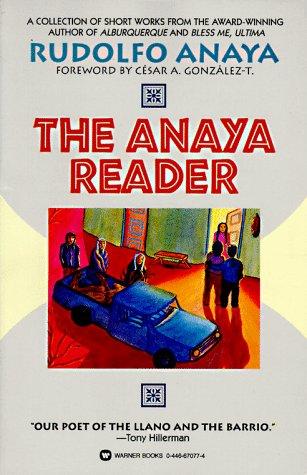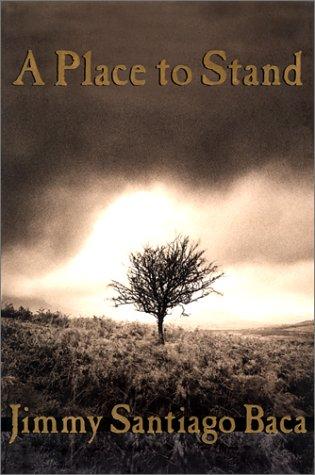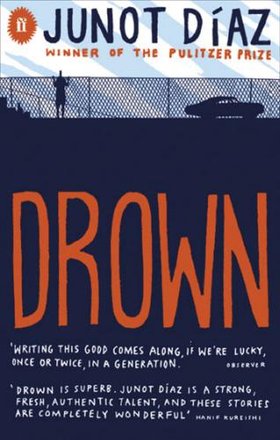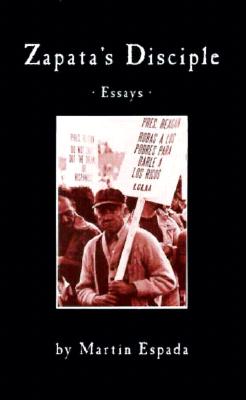[Note: A chronological list of links to AICL's coverage of the shut-down of
the Mexican American Studies Department at Tucson Unified School District is here. Information about the national Mexican American Studies Teach-in is here. The best source for daily updates out of Tucson is blogger David Abie Morales at Three Sonorans.]
Editors Note on Feb 25, 2018: Please see my apology about promoting Alexie's work. --Debbie
______________________________________
As I find them, I will add responses from authors whose books were taught in the now-outlawed Mexican American Studies program at Tucson Unified School District:
SHERMAN ALEXIE
On January 17th, 2012, Sherman Alexie tweeted:
Teachers who taught in the Mexican American Studies program that was shut down last week are no longer allowed to teach two of his books:
On January 29, 2012, I read Alexie's response at The Progressive. He wrote:
Let's get one thing out of the way: Mexican immigration is an oxymoron.
Mexicans are indigenous. So, in a strange way, I'm pleased that the
racist folks of Arizona have officially declared, in banning me
alongside Urrea, Baca, and Castillo, that their anti-immigration laws
are also anti-Indian. I'm also strangely pleased that the folks of
Arizona have officially announced their fear of an educated underclass.
You give those brown kids some books about brown folks and what happens?
Those brown kids change the world. In the effort to vanish our books,
Arizona has actually given them enormous power. Arizona has made our
books sacred documents now.
RUDOLFO ANAYA (added on Jan 25, 2012):
On Friday, January 21, Rudolfo Anaya was on Jay Nightwolf's radio program. You can listen to the program by going to the
Zinn Education Project website. Anaya is the author of
Bless Me Ultima, and
The Anaya Reader, two books that were taught in the Tucson Unified School District's Mexican American Studies program that was shut down.
JIMMY SANTIAGO BACA
On January 28, 2012, I read
Jimmy Santiago Baca's response at The Progressive. In part, he writes:
The banning in Tucson is a political tactic to oppress us, just the
latest attempt of many to lie to us, to spread distortions, to enfeeble
us by taking away our rights to education. They know that education is a
way to achieve equality, to empower ourselves, to see ourselves with
pride and enhance our self-esteem. Books that see us as intelligent,
that reflect our experience in a healthy light, lend themselves to
invigorating our resistance against injustice.
Six of his books were used in the now-banned Mexican American Studies program, including
A Place to Stand.
BILL BIGELOW
On January 13, 2012, Bill Below
wrote on the Rethinking Schools blog:
Rethinking Schools learned today that for the first time in its more-than-20-year history, our book Rethinking Columbus was banned by a school district: Tucson, Arizona. [...] What’s to fear? Rethinking Columbus offers teaching strategies
and readings that teachers can use to help students consider
perspectives that are too often silenced in the traditional curriculum.
Teachers who taught in the Mexican American Studies program that was shut down last week are no longer allowed to teach
Rethinking Columbus, a book he edited that includes essays, poems, and prose by American Indian writers.
JOSEPH BRUCHAC
In an email to me on January 17, 2012, Joseph Bruchac said:
In the long run, I think the actions of the Tucson
School Board may end up in a positive way--by
drawing attention back to RETHINKING COLUMBUS
and creating further awareness of the complex legacy
of Cristobal Colon. Either this was their intention all
along (closet progressives that they are on the school
board) or (thinking in terms of nautical metaphors), they
are attempting to save the sinking ship of the myth of
heroic European colonialism by an action as effective as
bailing with a tea cup!
His essay, "A Friend of the Indians" is in
Rethinking Columbus, a book that teachers who taught in the Mexican American Studies program are no longer allowed to teach.
RICHARD DELGADO and JEAN STEFANCIC (added Jan 31, 2012):
On January 31, 2012, I read
Richard Delgado and Jean Stefancic's response at The Progressive. Here's an excerpt:
Young minds will not learn about critical race theory or Latino history
or the historic struggles of their predecessors for school
desegregation, immigration reform, and equal rights. They may learn
about them piecemeal, but without an overarching framework, it will be
difficult for them to develop a comprehensive view of race in American
society.
Their book,
Critical Race Theory, was taught in the now-shut down Mexican American Studies department at Tucson Unified School District.
JUNOT DIAZ (added January 29, 2012):
On January 29, 2012, I read Junot
Diaz's response at The Progressive:
This is covert white supremacy in the guise of educational
standard-keeping--nothing more, nothing less. Given the sharp increase
of anti-Latino rhetoric, policies, and crimes in Arizona and the rest of
the country, one should not be surprised by this madness and yet one
is. The removal of those books before those students' very eyes makes it
brutally clear how vulnerable communities of color and our children are
to this latest eruption of cruel, divisive, irrational, fearful, and
yes racist politics. Truly infuriating. And more reason to continue to
fight for a just society.
His book,
Drown was taught in the now-banned Mexican American Studies program.
MARTIN ESPADA (added January 31, 2012)
Earlier today, I read Martin
Espada's response at the Progressive website. He said, in part:
In the end, this is just another bomb threat. All they have done is
force us to evacuate the building. We will gather ourselves in the dark,
and keep reading to each other in whatever light we can find.
His book,
Zapata's Disciple: Essays, can no longer be taught by teachers who taught in the now-banned Mexican American Studies Department at Tucson Unified School District.
DAGOBERTO GILB (added January 31, 2012)
Yesterday, I read
Dagoberto's response at The Progressive website:
What subversive information did those Tucson students learn? What is
kept from the government-approved textbooks and classrooms all across
the West?: You don’t have to be from somewhere else more important and
better to be a lawyer or an artist or a doctor or scientist. You don’t
have to leave your culture. You don’t have to be ashamed that your
parents struggled with English. We don’t have to accept being only the
cooks and maids, custodians and gardeners.
Two of his books are on the Cambium audit and can no longer be taught by the teachers in the now-banned Mexican American Studies Department.
SUZAN HARJO
In an email to me on January 18, 2012, Susan Harjo said:
The banned books and other materials removed from the Tucson public schools are a good start for a required reading list. I consider it a mark of distinction to be among the banned authors for my part of Rethinking Columbus. I am honored to be in the company of other writers who are targeted in Arizona's war on ethnic studies. I hope their reckless actions help raise awareness among more and more people of good will about what this last gasp of white supremacy is doing to our children and young people.
Her essay, "We Have No Reason to Celebrate" is in
Rethinking Columbus, a book that teachers who taught in the Mexican American Studies program are no longer allowed to teach.
Update, January 25th, 2012: Harjo wrote an extended essay for Indian Country Today. For more on her response to being banned, see
Rethinking Columbus: Book Banning in Tucson.
WINONA LADUKE (added January 25, 2012):
On January 21, 2012, Winona LaDuke's response to being banned was published at INFORUM. Her essay is in
Rethinking Columbus, one of the books boxed up and removed from classrooms in Tucson Unified School District.
Rethinking Columbus is no longer being taught in TUSD. See LaDuke's "
On Being Banned in Tucson."
WILLIAM L. KATZ
On January 18, 2012, via email, I received William L. Katz's response:
As the writer of two essays contributed from my Black Indians: A Hidden Heritage to Rethinking Columbus, a former public school teacher for fourteen years, and the writer of forty history books that have earned praise from sources ranging from the Wall Street Journal to Howard Zinn, I can only hope this pathetic censorship of ideas and knowledge that aims to keep young people uninformed about their lives, their society and the struggles that shaped their country and world, that this stupid decision in Arizona, will finally lead to a resounding victory for an inclusive, multicultural curriculum. We all deserve that, to read what we want, to learn what we need, and to understand our history not as patriotic, tasteless pablum, but something substantial and true enough to enable us to live in a country and world that was built by women and men of every race and region, and to appreciate and enjoy our neighbors. Part of this is learning that women and men were not handed democracy and justice but often had fight and sometimes die for it, and this is particularly true if they were in the way of those bent on conquest, exploitation, or just the pursuit of obscene profits.
His essay, "Black Indians and Resistance" is in
Rethinking Columbus, a book that teachers who taught in the Mexican American Studies program are no longer allowed to teach.
MATT DE LA PENA
On January 16th, Matt de la Pena
wrote on his blog:
A truly scary situation. Tucson schools have just “shut down” all
courses related to Mexican American Studies (in essence, banning Chicano
authors). If you’re familiar with Tucson’s racial makeup, you know this
means that literally thousands of Chicano students will no longer be
allowed to see a reflection of themselves in literature. The teachers
literally had to pack up the books and remove them from their
classrooms.
Teachers who taught in the Mexican American Studies program that was shut down last week are no longer allowed to teach his book,
Mexican WhiteBoy.
BOB PETERSON (added Jan 31, 2012)
On January 16, 2012, Bob Peterson wrote
on his blog:
What’s most disturbing is the banning’s broader context, in particular
Arizona’s anti-immigrant legislation and the move across the country
toward scripted curriculum that too often ignores students’ cultural
heritages and that undermines the ability to promote critical thinking.
On a more positive note, however, the banning can be seen as the
flailing of small-minded bigots attempting to derail multicultural,
anti-racist curriculum. In this sense, the move is similar to the
anti-gay rantings of Santorum and Company.
Teachers who taught in the Mexican American Studies program that was shut down last week are no longer allowed to teach
Rethinking Columbus, a book he edited that includes essays, poems, and prose by American Indian writers.
CORNEL PEWEWARDY
On January 20, 2012, Cornel Pewewardy sent me the following comment by email:
The "Empire" Strikes Back via a Neoliberal Agenda
His essay, "A Barbie-Doll Pocahontas" is in
Rethinking Columbus, a book that teachers who taught in the Mexican American Studies program are no longer allowed to teach.
ROBERTO RODRIGUEZ (added on Jan 25, 2012):
On Friday, January 21, Roberto Rodriguez was on Jay Nightwolf's radio program. You can listen to the program by going to the
Zinn Education Project website. Rodriguez is the author of
Justice: A Question of Race and
The X in La Raza II (I am unable to locate a cover of the book; please send me a link or image), both of which were used in the Tucson Unified School District's Mexican American Studies program that was shut down.
LUIS ALBERTO URREA (added January 29, 2012)
On January 29, 2012, I read Luis Alberto
Urrea's response at The Progressive website:
The issue seems to be the power boys and girls are afraid that studying
MacArthur winning Tohon O'odam poet Ofelia Zepeda is un-American.
Cult-like. Divisive. Yes, that's right--Indians are out too. Sherman
Alexie, that notorious wetback, has been ba--ed, boxed. As well as that
notorious narco, Guillermo Shakespeare. Thoreau--well. Come on. When
isn't Thoreau banned? I hereby make him an Honorary Homeboy.
Urrea is the author of five books on the list of works taught by teachers in the now-banned Mexican American Studies program, including
The Devil's Highway: A True Story.
________________________________________________________
FOR A COMPREHENSIVE LIST OF AICL'S COVERAGE, CLICK ON
:
AICL Coverage of Arizona Law that resulted in shut down of Mexican American Studies Program and Banning of Books



























